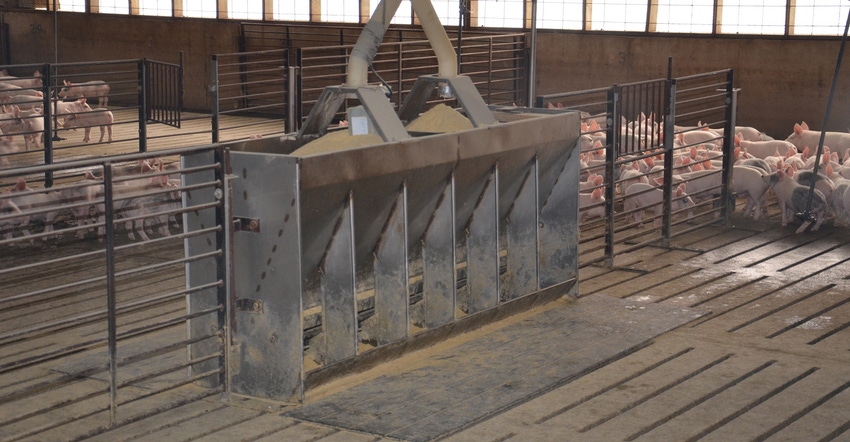August 30, 2019

We all watched feed prices move higher in the spring and early summer due to adverse weather. Corn futures prices rose by nearly $1 per bushel, around 25%. Cash corn prices rose by more than $1 per bushel in many locations. There were appreciating basis levels as corn supplies tightened, especially in the eastern Corn Belt, with cash corn prices rising by maybe $1.50 at some locations.
Soybean meal futures prices rose by about $30 per ton. This was about 10% — not nearly as much as corn, due to the large inventory of soybeans nationwide relative to corn.
Will feed be available in the coming 12 months for hog operations? Of course it will, but at what prices? We will break those prices into the futures component and the basis component.
First, the futures component: Ironically, by late summer, futures prices for both corn and soybean meal had almost dropped back down to pre-weather concern levels. For most of us, it’s amazing to think that one of the worst springs in memory might eventually have little impact on futures prices. We also know that final yields and production still will be important to prices.
The second component of cash corn prices is the basis level. Basis is the cash price at your local market minus the nearby futures. We often say that basis is a strong indicator of the supply-and-demand conditions in the local market. If there is strong demand in the local market in relation to supply, then basis will tend to be strong. Eastern Corn Belt basis levels were maybe 50 cents of the $1.50 rise in cash prices during the early summer rally.
Location, location, location
Because basis reflects local conditions, the location of your hog operation will be an influence on your feed prices and availability. Location matters! For Illinois, Indiana and Ohio, corn production is expected to be down 20% from last year. In contrast, the western Corn Belt states of Nebraska, Iowa and Minnesota may only be down 1%. For soybean production, those numbers are down 24% in the eastern states and only 14% for the western states.
The fear of sharply higher feed prices cutting into hog profitability has been reduced, but there will be ongoing concerns for strong corn basis levels in local markets. The strongest corn basis will be in regions with the smallest production this year.
Availability will be an issue in the eastern Corn Belt, and hog producers will need to compete with other end users for limited supplies. There will be less impact on meal prices due to the large inventories of soybeans from previous crops.
While the overall pork outlook has weakened some, I still look for higher hog prices in 2019, and a profitable year with per-head profits of $10 to $12. However, we’ve learned in 2019 that the pork outlook can change quickly.
Hurt is a Purdue University Extension agricultural economist. He writes from West Lafayette, Ind.
About the Author(s)
You May Also Like




